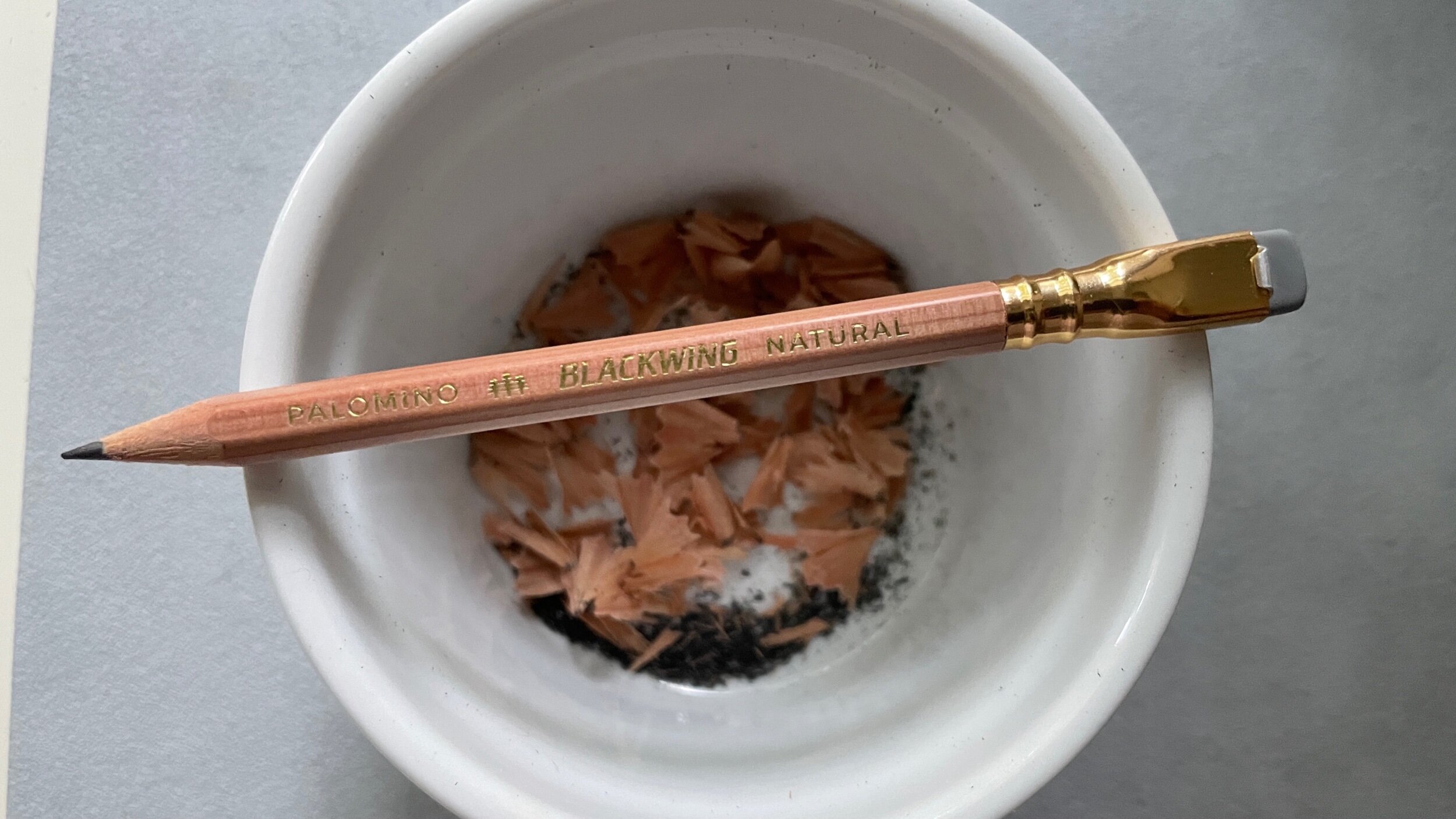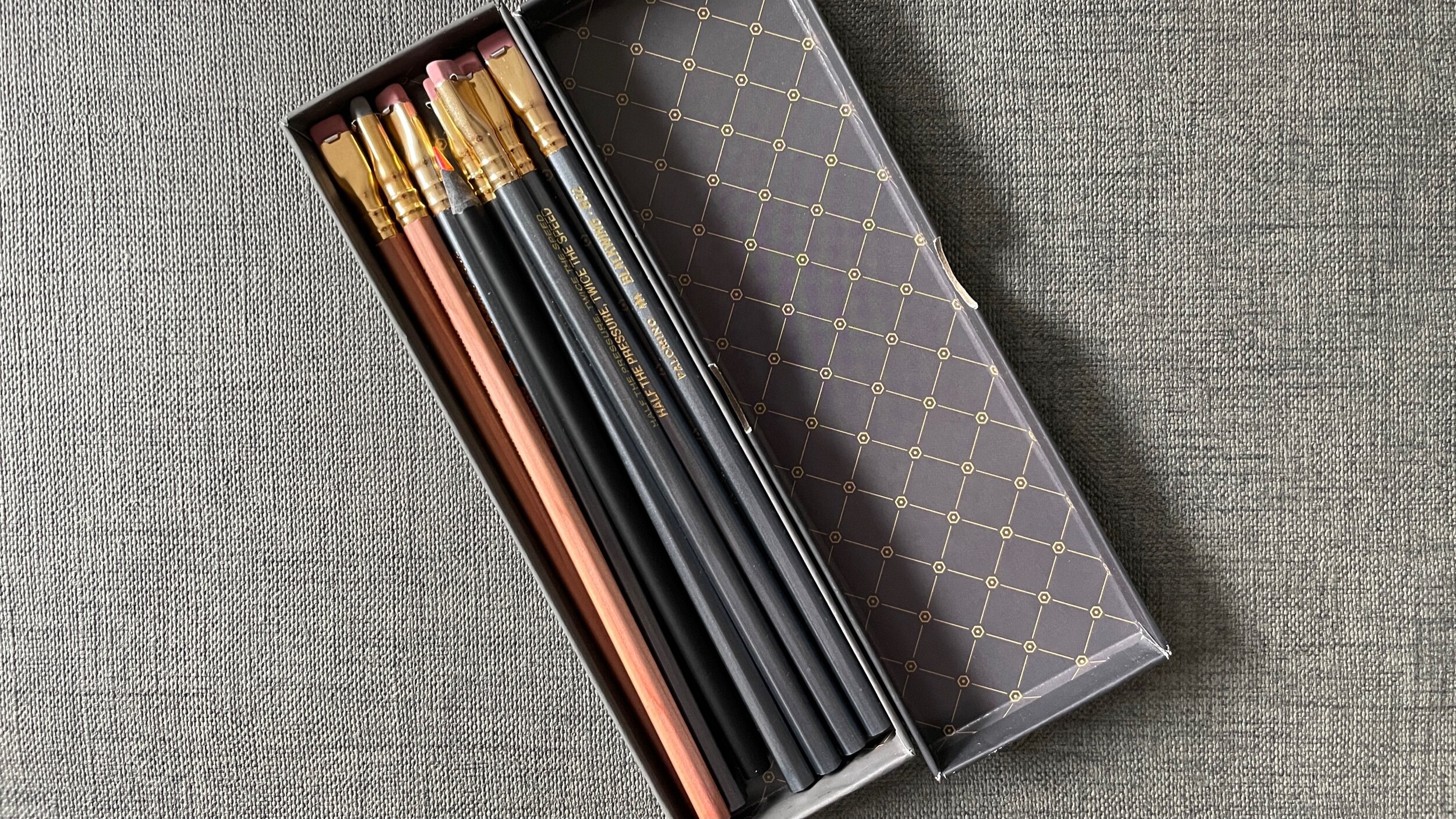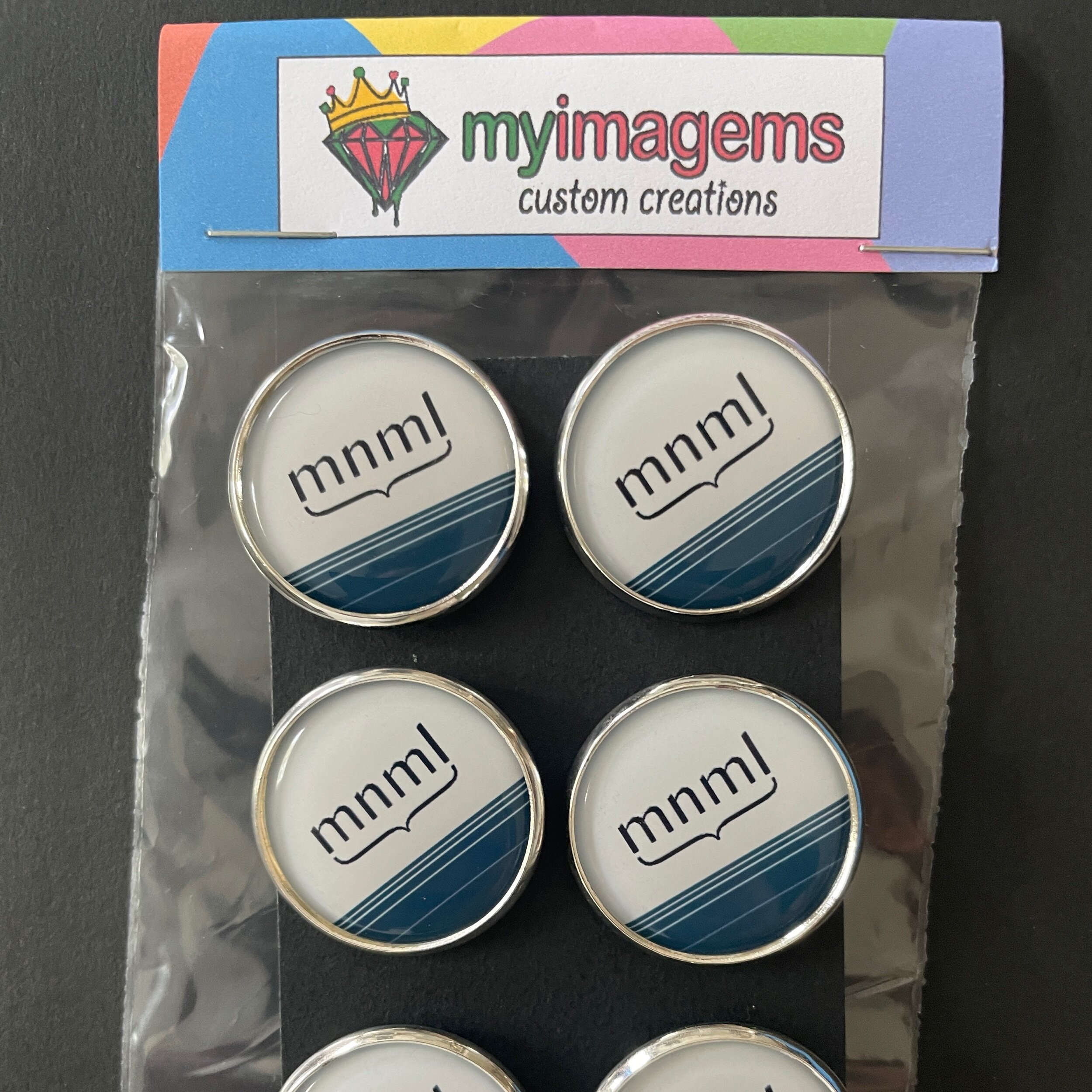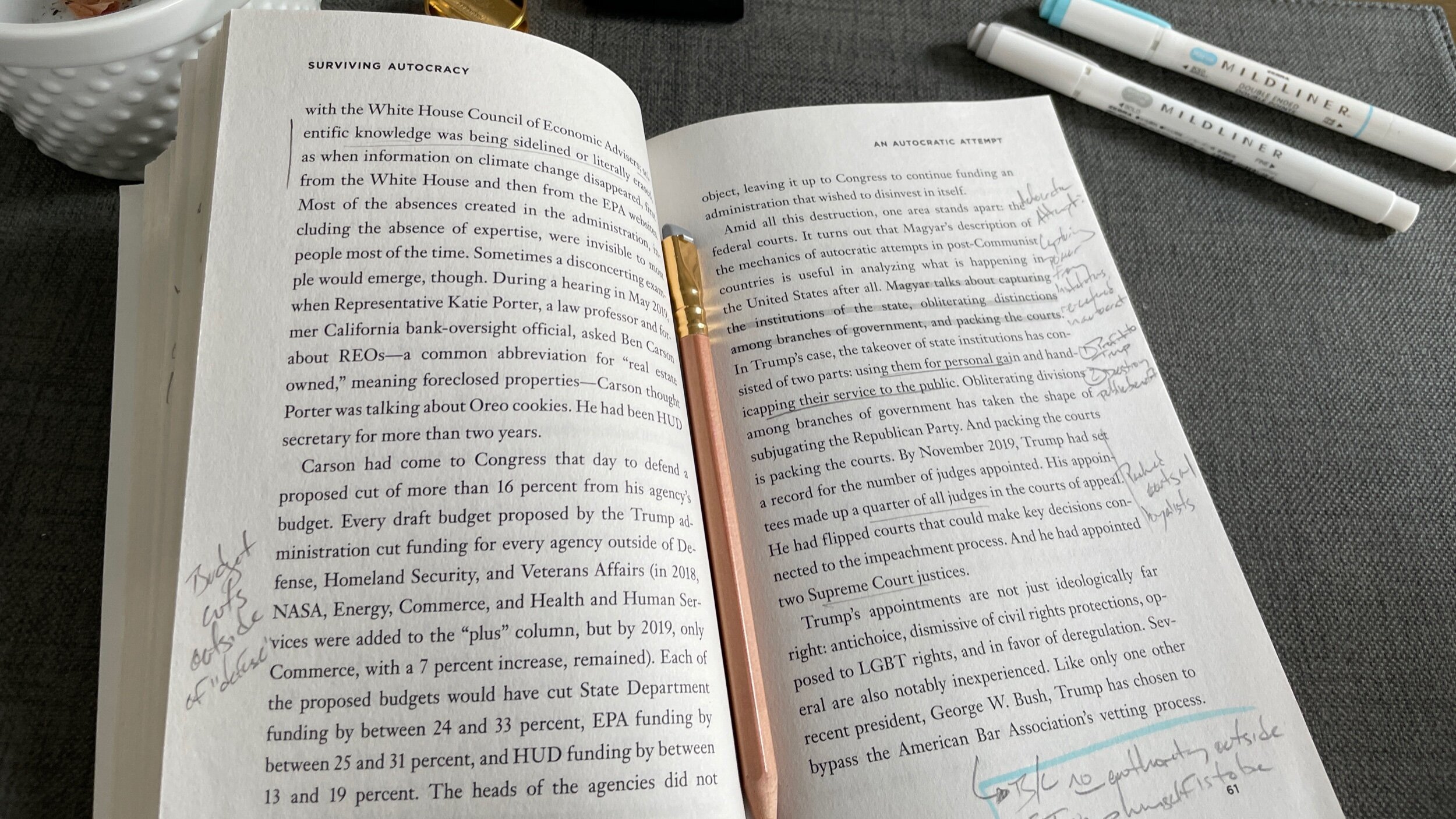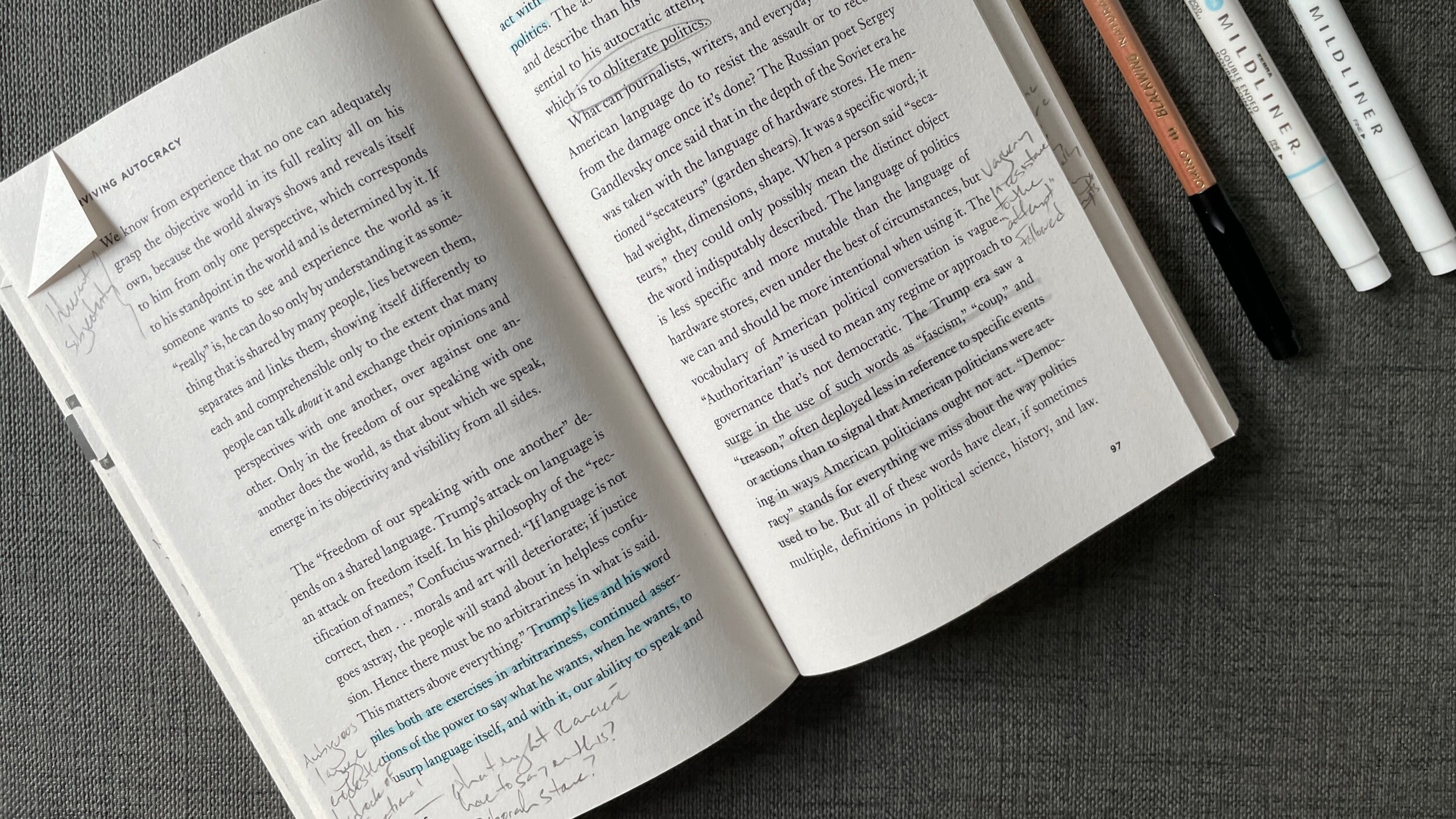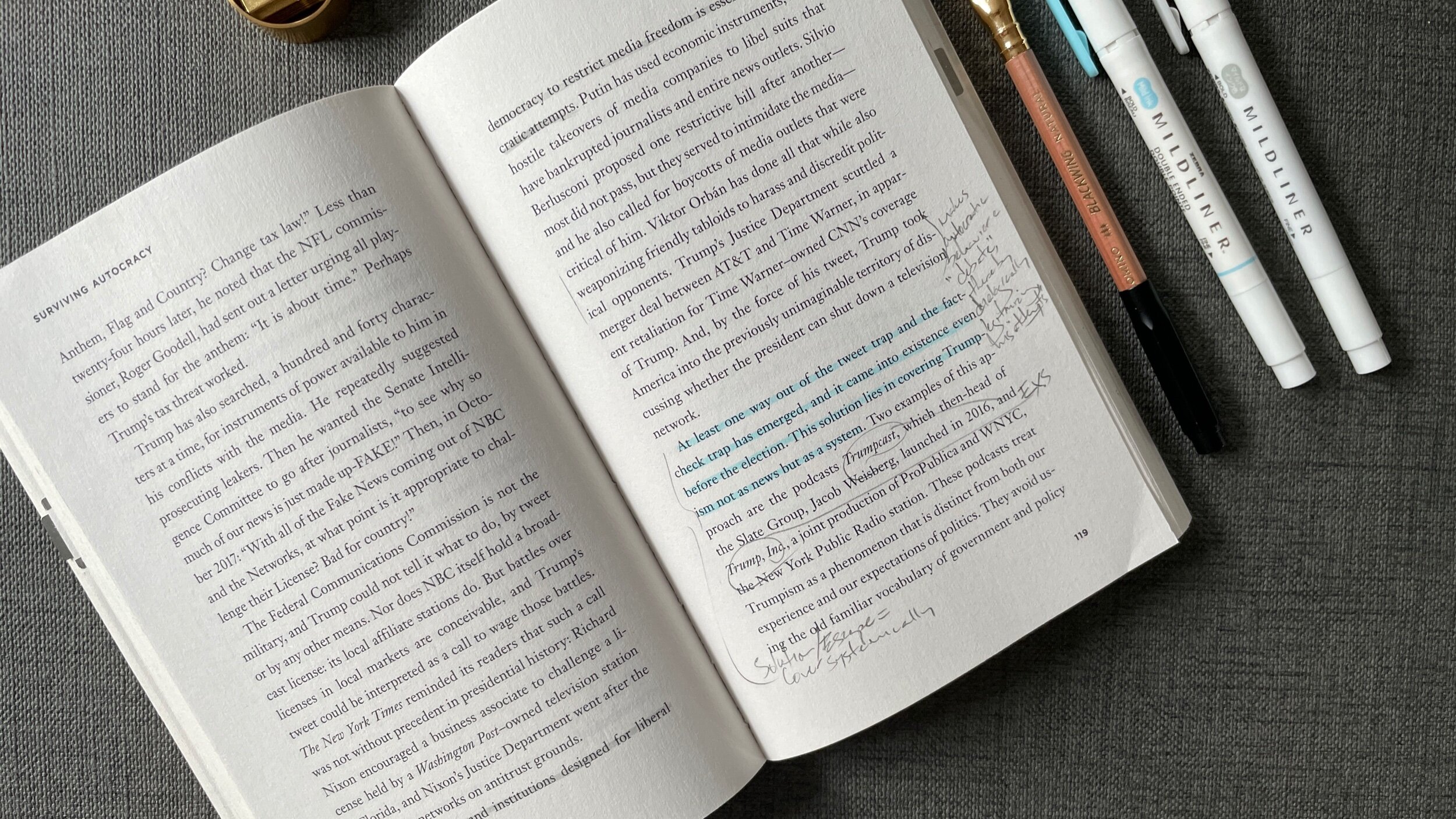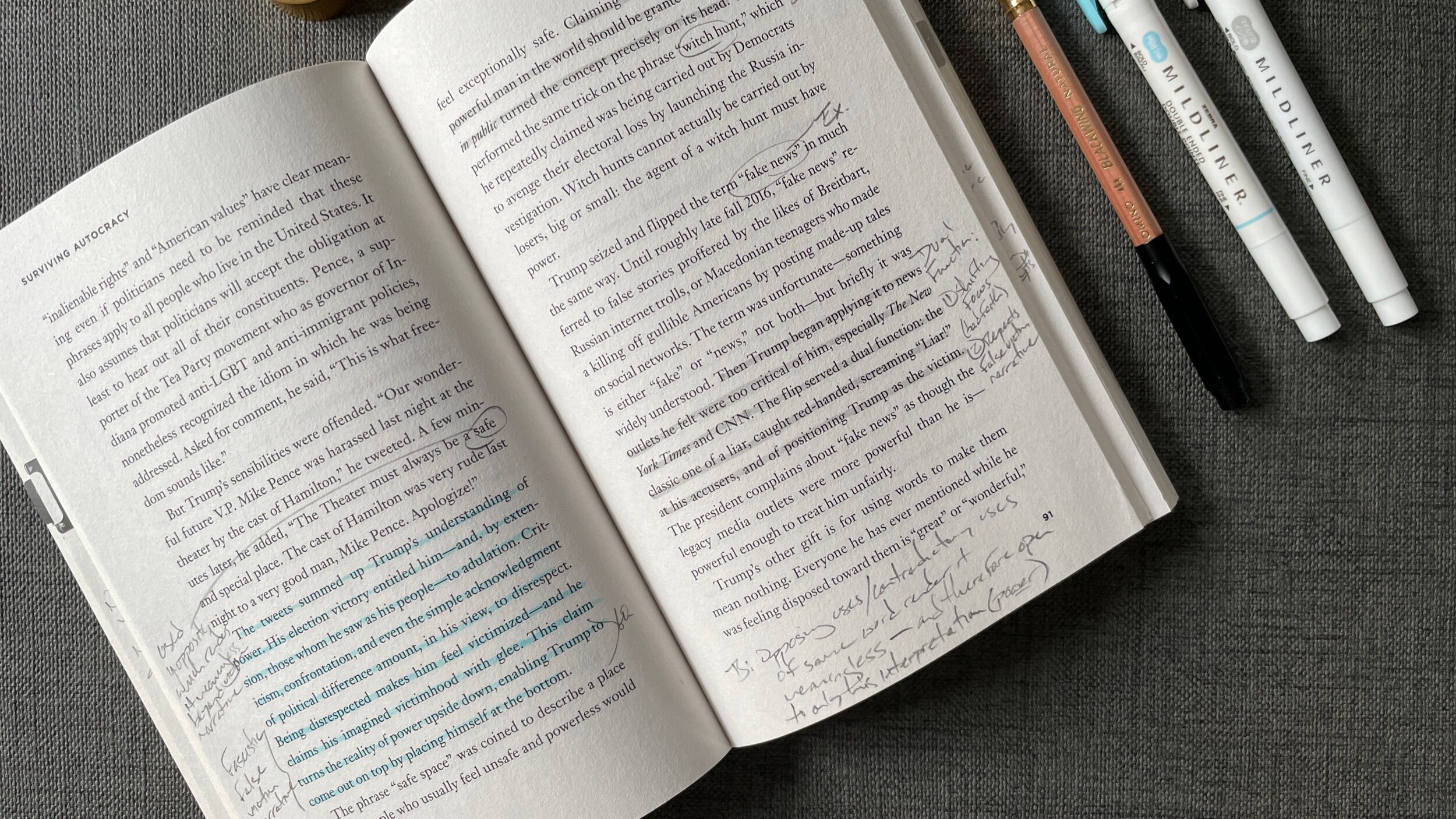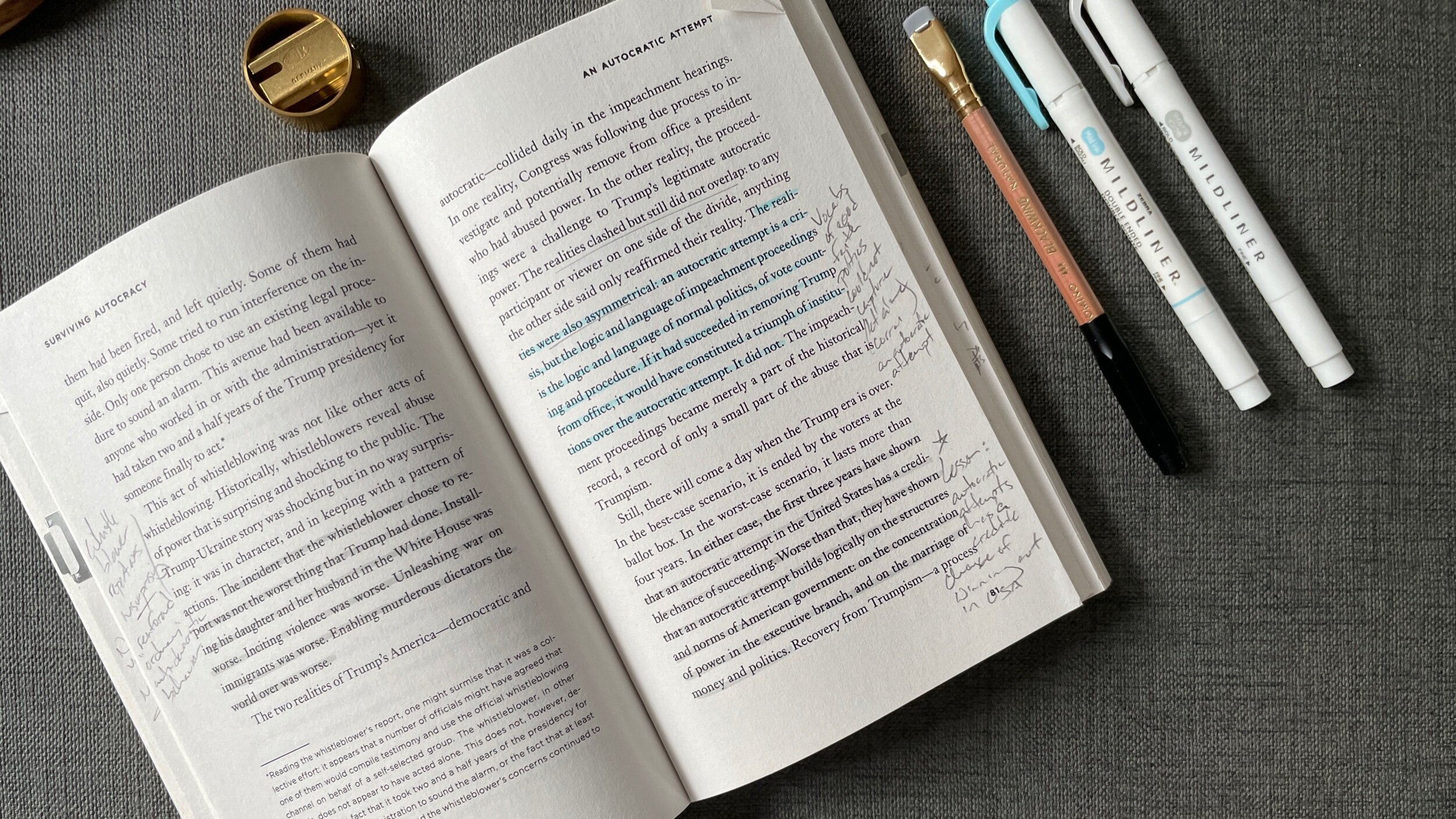The beauty of analog stationery is that it runs out
This has been a recovery week. I spent four days off of my phone, with few exceptions. My head lay in books from my mountainous to-read pile.
The tip of the iceberg
Reading helps me recharge. A trying school year and six weeks of travel saw me feeling ragged. Consequently, I read a lot this week. Four of five weekdays were spent reading. I feel like myself again now.
I approach non-fiction books in two waves. The first wave is a quick run-through. I may make a note here or there with whatever pencil is at hand, but I’m focused on scanning for the author’s over-arching argument. Mostly, I scratch a rough outline onto the title page.
Then I read carefully for the details. What specific supporting evidence does the offer provide? Does their evidence show what they think it does? Did my skim accurately capture the author’s argument?
My detailed read-through involves healthy highlighting and extensive margin notes. I even use what Ryder Carrol calls “threading” to connect one set of notes to others on pages throughout the book.
The process involves a lot of writing. So I start each new book with a fresh wood pencil, just for margin notes. Beginnings are fun.
All the Naturals were gifts
My detail read this week powered through over half of the Blackwing. And the philosophical bent to my reading this week has me reviewing my week’s writing through a similar lens. So there.
The joyful experience of writing with a wood pencil is, by its very nature, ephemeral.
The more you enjoy the pencil, the more you write. The more you write, the more you sharpen. The more you sharpen the pencil, the more quickly your pencil disappears.
The pencils I like most disappear most quickly. Like this Natural.
Whelp. That escalated.
And I suppose the same can be said for ink in a pen. 1 ml empties quickly. All great things have both a beginning and an end.
Part of the fun of analog stationery is knowing you get to try something new soon. A new pencil once your current one stubs down. A new ink once your converter croaks. A new notebook — sometimes just because.
I finished Gessen’s Surviving Autocracy this week. I’m excited for my next book — and its fresh pencil. Wahoo.
This week’s Inked Tines update includes my most recent currently inked writing tools.
Toolset
Pens / pencils. How’s this for a twist? This week’s standout combo is my Palomino Blackwing in Natural and Mild Grey Mildliner. The Natural’s core provides dark lines with a core soft enough to avoid snagging on soft book paper. The Mildliner offers visibility and reliability. No complaints.
Pilot 912 (SF) — 1/5. Smooth, European-width F line when inked with Vermeer. Exposes some shading as a result. Smooth, sturdy pocket carry. Feed is stingy enough to avoid feathering too badly on Field Notes paper. Journaling, editing, pocket carry.
Faber-Castell (M) — 1/4. Excellent pop of color, especially during letter editing on Wednesday. The M nib is consistent. Pair shades noticeably. Wonder how Sunset would do as a highlighter in a broader stub nib? Editing.
Franklin-Christoph 46 (M SIG) — 2/5. A converter nearing empty and still no clogging issues. This pair knows how to party. Wet flow, easy shimmer. Lack of clip makes gently rolling the pen before writing easy. Rolling unsettles shimmer particulates.
Platinum 3776 (F) — 1/2. Smooth, reliable line. Cat at Midnight is dark enough to work as a dark grey ink. Combined, this combo is an excellent task management pair. I tend to drop 3776s. So this pair stays on the desk. Task management.
Sailor Pro Gear (Z Architect) — 1/2. Fantastic shading from Brane. Reliable writer — because Sailor. Pair is wet enough to keep the sharp architect nib smooth. I’ll take another week, please. Journaling, task management.
Lamy Safari (B) — 1/2. Velvet shades like a boss. The B nib emphasizes Velvet’s shading. The Lamy feed aired out mid-week and needed to be flooded. Has worked well since.
Notebooks. Journal. A5 Taroko Breeze. The irony of this week is that I wrote only two pages. And I had access to my favorite currently inked so far this year. Odd.
I wrote one journal entry this week. The entry added two pages to the used part of my Breeze. The notebook now sits at page 21.
I tapped both the Pilot 912 and Sailor Pro Gear. The Pilot partitioned sections of the page for different ideas. The Sailor, and its rockstar Architect bring, carried the weight of my thinking.
Commonplace. A5 Elemental Paper Iodine. No new writing. Both Schulman’s history of ACT UP and now Gessen’s political analysis are on the to-add pile.
Written dry. For the second week in a row, all six pens have survived. I continue on with six inked pens. Brave face and all.
Newly inked. The six inked pens above are a truly wonderful sextet. The thought of inking a new pen honestly didn’t cross my mind.
Most of my writing time was spent with pencil and highlighter. My pens largely sat.
Lonely. Despondent. Lovely.
The collection
Incoming / new orders. No new pens or inks this week. No new notebooks or types of paper.
But there are buttons. An alpha version of buttons. For friends I meet at the DC Pen Show.
Looking sharp … see what I did there?
Outgoing / trades or sales. A pen friend recommended to me that I should bring my Parker Vacumatic to the DC Show. The suggestion is that a vintage stationery vender may be willing to place my elder-pen in their repair queue.
Food for thought.
Additionally, I began the process of setting aside pens that I only rarely use. So far, a tray of pens worth sending on to more attentive homes holds six pens: a Pilot Kakuno, a Pilot Prera, two Faber-Castell Looms, and two Sailor 1911 Mid-Sizes.
Ocean’s Six
Three of these six sit in the below $50 range: the Kakuno and Looms. One between $50-100. And two between $100-150, the Sailors. I’m considering giving the three more accessible pens away to friends who are still exploring.
Currently reading and listening
Fiction. I really dug into the third act of Sanderson’s Rhythm of War this week. As of this writing, I’m partially through chapter 92. That makes for 16 chapters read over the course of the week.
Peripheral characters are stepping in to help support the now-overburdened main cast. Details would prove easy spoilers. Suffice to say: Adolin has come alive in the book’s third act.
Summers are awesome.
Nonfiction. Most of my days this week were spent with Gessen’s (2020) new book in front of me. I started and completed my second, detailed read-through of their book.
They bring a fresh — to me, at least — vocabulary for describing political talk, taken from the Hungarian sociologist, Bálint Magyar. The overall thesis is that folks in the US have recently lived through what Magyar calls an autocratic attempt.
I dig political sociology. I have a Bachelor’s in sociology. So Gessen’s analysis feels comfortable, upon this week’s closer read-through.
I’m interested enough to have tracked down Magyar’s book. The tome is over 800 pages long. I hope there’s an English version.
Music. The years since I began my Spotify subscription have changed how I listen to music. I often explore pre-mixed playlists full of songs and artists that are new to me, which have a genre of music I enjoy in common.
And then there are self-care weeks like this past week.
I returned to my musical “home” this week with a 25 track compilation of Sigur Rós songs. They project a contained energy that I find invigorating. My first meditation mix comprised half of Àgœtis Byrjun.
If a metal band and a community symphony had a child, that child would be Sigur Rós.
This week, Spotify’s compilation made for excellent background music while I read.


